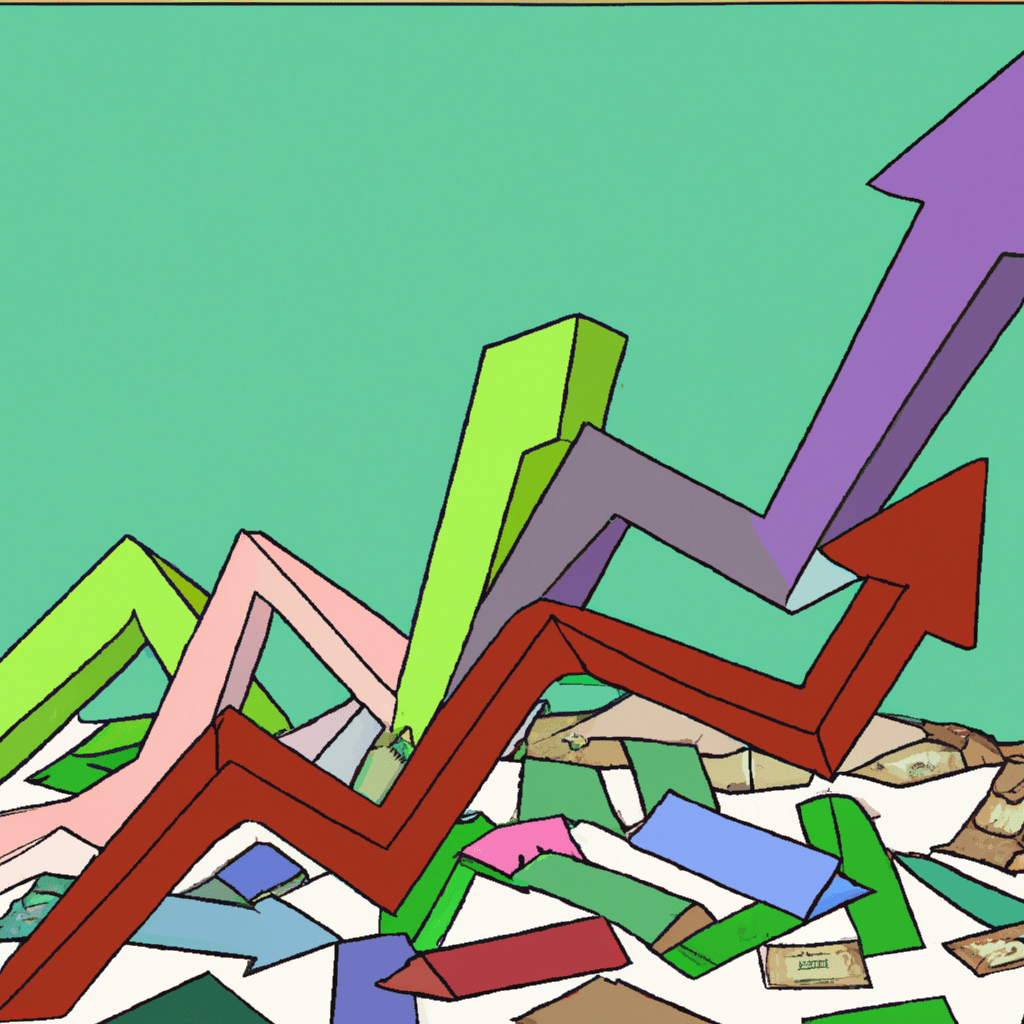Are you new to the world of financial derivatives? Do terms like futures contract, stock derivatives, and futures options trading confuse you? Don't worry, you're not alone. Understanding financial derivatives can be a daunting task, but with the right guidance, you can navigate this complex market with ease. In this comprehensive beginner's guide, we will demystify the world of financial derivatives, specifically futures and options. We will explore the basics of futures contracts and stock derivatives, providing you with a closer look at how these instruments work. Additionally, we will delve into the strategies and tips for success in futures options trading. So, whether you're a novice or an experienced investor, this article is your go-to resource for mastering financial derivatives.
1. “Understanding Financial Derivatives: A Comprehensive Beginner’s Guide to Futures and Options”

Financial derivatives are complex financial instruments that derive their value from an underlying asset. They have become an integral part of modern financial markets, providing investors with various opportunities to hedge risks, speculate on price movements, and diversify their portfolios. In this comprehensive beginner's guide, we will focus on two commonly traded types of financial derivatives: futures and options.
A futures contract is a legally binding agreement between two parties to buy or sell an asset at a predetermined price and date in the future. It allows market participants to speculate on the future price of an asset without physically owning it. Futures contracts are commonly used in commodities such as oil, gold, and agricultural products, but they can also be applied to financial instruments like stock indices and currencies.
Options, on the other hand, provide the buyer with the right, but not the obligation, to buy (call option) or sell (put option) an underlying asset at a predetermined price within a specified time period. Options can be used to hedge against potential losses or to speculate on price movements. They are widely traded in stock markets, allowing investors to take advantage of price fluctuations without owning the underlying shares.
For beginners, understanding the basics of futures and options is crucial before venturing into the world of financial derivatives. Learning about futures contracts involves grasping key concepts such as margin requirements, contract specifications, and the role of clearinghouses in ensuring the smooth functioning of futures markets. Similarly, exploring options trading requires knowledge of strike prices, expiration dates, and the Greeks (delta, gamma, theta, vega, and rho) that measure various aspects of an option's value.
Stock derivatives, including futures and options, offer investors several advantages. They provide opportunities to profit from both rising and falling markets, allowing individuals to hedge their existing stock positions or speculate on market directions. Moreover, trading in futures and options can enhance portfolio diversification and provide a way to manage risk more effectively.
In conclusion, financial derivatives, particularly futures and options, play a vital role in modern financial markets. This comprehensive beginner's guide has provided an overview of these instruments, highlighting their characteristics, applications, and benefits. As with any investment, it is essential to conduct thorough research, seek professional advice, and have a clear understanding of the risks associated with futures and options trading.
2. “Exploring the World of Financial Derivatives: A Closer Look at Futures Contracts and Stock Derivatives”

Financial derivatives are complex financial instruments that derive their value from an underlying asset. They are commonly used by investors to manage risk, speculate on future price movements, and hedge against potential losses. In this article, we will take a closer look at two types of financial derivatives: futures contracts and stock derivatives.
Futures contracts are a type of financial derivative that obligates the buyer to purchase an asset or the seller to sell an asset at a predetermined price and date in the future. These contracts are standardized and traded on organized exchanges, such as the Chicago Mercantile Exchange (CME). Futures contracts are widely used in commodities trading, allowing producers and consumers to lock in prices and mitigate the risk of price fluctuations.
For beginners, understanding futures contracts can be overwhelming. However, with a basic understanding of how they work, anyone can begin to explore the world of futures and options trading. Futures contracts provide an opportunity for investors to speculate on the future price movements of various assets, including commodities, currencies, and stock indexes. By taking a position in a futures contract, investors can profit from both upward and downward price movements.
Stock derivatives, on the other hand, are financial instruments whose value is derived from an underlying stock. They include options, warrants, and futures contracts based on individual stocks or stock indexes. Stock derivatives are commonly used by investors to hedge against potential losses or to speculate on the future price movements of specific stocks.
Futures options trading is another aspect of the world of financial derivatives. It involves trading options contracts that are based on futures contracts. Options give the holder the right, but not the obligation, to buy (call option) or sell (put option) the underlying asset at a predetermined price within a specified time frame. Futures options trading provides investors with more flexibility and potential strategies to capitalize on market movements.
In conclusion, financial derivatives, including futures contracts and stock derivatives, play a significant role in the world of finance. They provide investors with opportunities to manage risk, speculate on price movements, and hedge against potential losses. For beginners, understanding these instruments may seem daunting, but with the right guidance and knowledge, anyone can navigate the world of financial derivatives and explore the possibilities they offer.
3. “Mastering Futures Options Trading: Strategies and Tips for Success in the Financial Derivatives Market”

Mastering Futures Options Trading: Strategies and Tips for Success in the Financial Derivatives Market
Financial derivatives, such as futures contracts and options, play a crucial role in the global financial markets. They offer investors and traders a unique opportunity to hedge risks, speculate on price movements, and maximize their returns. Among various types of financial derivatives, futures options trading is gaining popularity due to its potential for substantial profits. In this section, we will explore strategies and tips that can help beginners navigate the complexities of the futures options market.
Before diving into the strategies, it is essential to understand the basics of futures contracts and options. A futures contract is a legally binding agreement to buy or sell an underlying asset at a predetermined price and date in the future. On the other hand, an options contract gives the holder the right, but not the obligation, to buy or sell the underlying asset at a specified price within a predetermined period. Both futures and options contracts are widely traded on exchanges, providing market participants with ample opportunities for profit.
For beginners, gaining a solid understanding of futures and options is crucial. It is recommended to start with a comprehensive beginners guide that covers the fundamentals of financial derivatives, including futures and options. This will provide a solid foundation and help individuals grasp the intricacies of the futures options market. Understanding key concepts such as strike price, expiration date, and contract specifications is essential for successful trading.
One popular strategy in futures options trading is called the covered call strategy. This strategy involves holding a long position in the underlying asset and simultaneously selling a call option on that asset. By doing so, traders can generate income from the premium received for selling the call option while still benefiting from any potential upside in the underlying asset's price. This strategy is often employed by investors who are bullish on the underlying asset but want to generate additional income.
Another common strategy is the protective put strategy. This strategy involves purchasing a put option on an underlying asset to mitigate downside risk. By holding a long position in the underlying asset and purchasing a put option, traders can limit their potential losses if the price of the asset declines. This strategy is often used by investors who are concerned about potential market downturns but still want to maintain their long positions.
In futures options trading, it is crucial to develop a disciplined approach and stick to a well-defined trading plan. Proper risk management is key to success in the financial derivatives market. Traders should set clear profit targets and stop-loss levels to protect their capital. Additionally, keeping up with market trends, staying informed about economic indicators, and conducting thorough research on the underlying assets are essential for making informed trading decisions.
In conclusion, futures options trading offers a multitude of opportunities for investors and traders in the financial derivatives market. By mastering strategies such as the covered call and protective put, beginners can optimize their chances for success. It is important to start with a solid understanding of futures contracts and options through a beginners guide, ensuring a strong foundation for future trading endeavors. With proper risk management and a disciplined approach, individuals can navigate the complexities of the futures options market and capitalize on its potential for substantial profits.
In conclusion, this article has provided a comprehensive beginner's guide to understanding financial derivatives, specifically futures and options. We have explored the world of financial derivatives, with a closer look at futures contracts and stock derivatives. Additionally, we have discussed strategies and tips for success in futures options trading. By delving into these topics, readers can gain a better understanding of the intricacies of the financial derivatives market and how to navigate it effectively. Whether you are a beginner or looking to enhance your knowledge, this article serves as a valuable resource for anyone interested in financial derivatives, futures contracts, and options trading.





